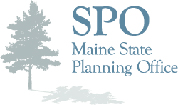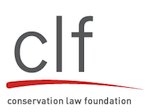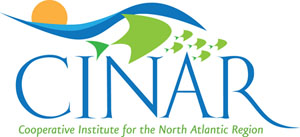Creating consistent terminology, sharing existing science and generally cooperating to find ways to mitigate and adapt to the effects of climate change are among the goals of the newly-formed North Atlantic Landscape Conservation Cooperative (NALCC).
“At its foundation is the partnership of state and federal agencies and NGOs that have agreed to work together to address the major stressors and uncertainties associated with climate change and land use changes” said Andrew Milliken, first full-time staffer of the NALCC. “Within the larger mission, we are developing a shared scientific capacity that includes the science needed in the coastal and marine environment, as well as the terrestrial and aquatic environments.”
LCCs will “add value” to efforts already underway by various agencies and NGOs, said Milliken, who previously coordinated the Atlantic Coast Joint Venture, which focuses on the conservation of habitats for migratory birds within the Atlantic Flyway/Atlantic Coast Region from Maine south to Puerto Rico. “But I’m actually an oceanographer by training, so it’s great to be working in the marine environment.”
“We will try to bridge the gaps” in scientific information, added Milliken. “Our partners work with existing partnerships, to see what value the LCC can add.”
The process toward achieving the goals includes identifying the right partners, the current science and the gaps. In June of 2011, a Northeast Conservation Framework Workshop was held in Albany, New York which helped to clarify the goals for the Northeast, Milliken said.
“One of the things that came out of our process, so far, is an interest in classification and mapping on a regional scale, and a consistent way to look at things,” said Milliken. “For instance, Maine and New Hampshire might talk about systems using different terms. Ultimately, we want to produce consistent maps for marine, coastal, aquatic and terrestrial systems.”
A second high priority identified was the effect of sea level rise (SLR) on marshes and beaches.
“A lot of different partners are trying to address SLR, so we are assessing what’s available in the northeast region and determining where we can add value,” said Milliken. “Many projects provide large scale information that is not usable by a town planner. We hope to bring clarity to what’s available already and make sure we have the tools to address SLR at different spatial scales. It is what we need to make things happen.”
A third major area of concern is working to document and map available information through existing marine partnerships, such as the Northwestern Atlantic Marine Bird Conservation Cooperative.
“For instance, where are the concentrations of northern Gannets on a seasonal basis?,” Milliken said. “One reason to know is wind power development.” The cooperative has developed a database of the distribution of marine birds and identified informational needs to try to further refine and improve that information to indicate high priority areas for marine birds.
“There are clearly other marine issues that need addressing but they haven’t been identified yet,” he added. “We’re still in the assessment phase, trying to understand what is ongoing in science, and working to develop relationships with partners.”
The NALCC is now funded at about $1 million a year for science projects, but “the conservation community in the North Atlantic region will need more funding to address climate change and other major stressors,” said Milliken. “We hope we can share and leverage resources—leverage the use of funds to bring partners to the table.”
First, the right partners for the northeast region must be identified. “State fish and wildlife agencies may or may not have a strong connection to the marine environment, so we need to reach out to agencies that do,” he explained. “The Gulf of Maine is a good example. We need to build in partners and partnerships already working there, such as the Northeast Regional Oceans Council and the Gulf of Maine Council on the Marine Environment.”
The geographic area covered by the North Atlantic LCC extends from southeastern Virginia north along the mid-Atlantic coast through New England to Nova Scotia and the Gaspe Peninsula of Quebec. The boundaries for this LCC also include the northern Piedmont ecoregion immediately west of the mid-Atlantic coastal plain, as well as the Adirondack Mountains in New York. The states included in the NALCC are Connecticut, Delaware, District of Columbia, Maine, Maryland, Massachusetts, New Hampshire, New Jersey, New York, Pennsylvania, Rhode Island, Vermont and Virginia
According to the NALCC website, “Coastal zone habitats are among those most likely to be heavily impacted by sea level rise due to climate change, and with the level of human development along the coast of the North Atlantic LCC, these coastal habitats are threatened to be trapped between rising water levels and human infrastructure.”
The NALCC is focused on the conservation of fish, wildlife, plants and their habitats within the northeastern states and provides a forum for continuous exchange and feedback among partner organizations, scientists as well as fish, wildlife and habitat managers.
In Canada—where the provinces of New Brunswick, Nova Scotia, Prince Edward Island and Quebec will be included—the only standing member so far is Environment Canada’s Canadian Wildlife Service. “We have a strong interest in working with the Provinces,” Milliken said.
The NALCC is one of 21 LCCs established by order of the Secretary of the Interior. LCCs are management-science partnerships that use integrated resource-management actions to address climate change, linking science and conservation delivery. The participating DOI bureaus are U.S. Geological Survey, National Park Service, and U.S. Fish and Wildlife Service. Other partners are the National Oceanic and Atmospheric Administration (NOAA), Environmental Protection Agency. U.S. Forest Service and NGOs including the Nature Conservancy.
Website
http://www.northatlanticlcc.org/
Print


















